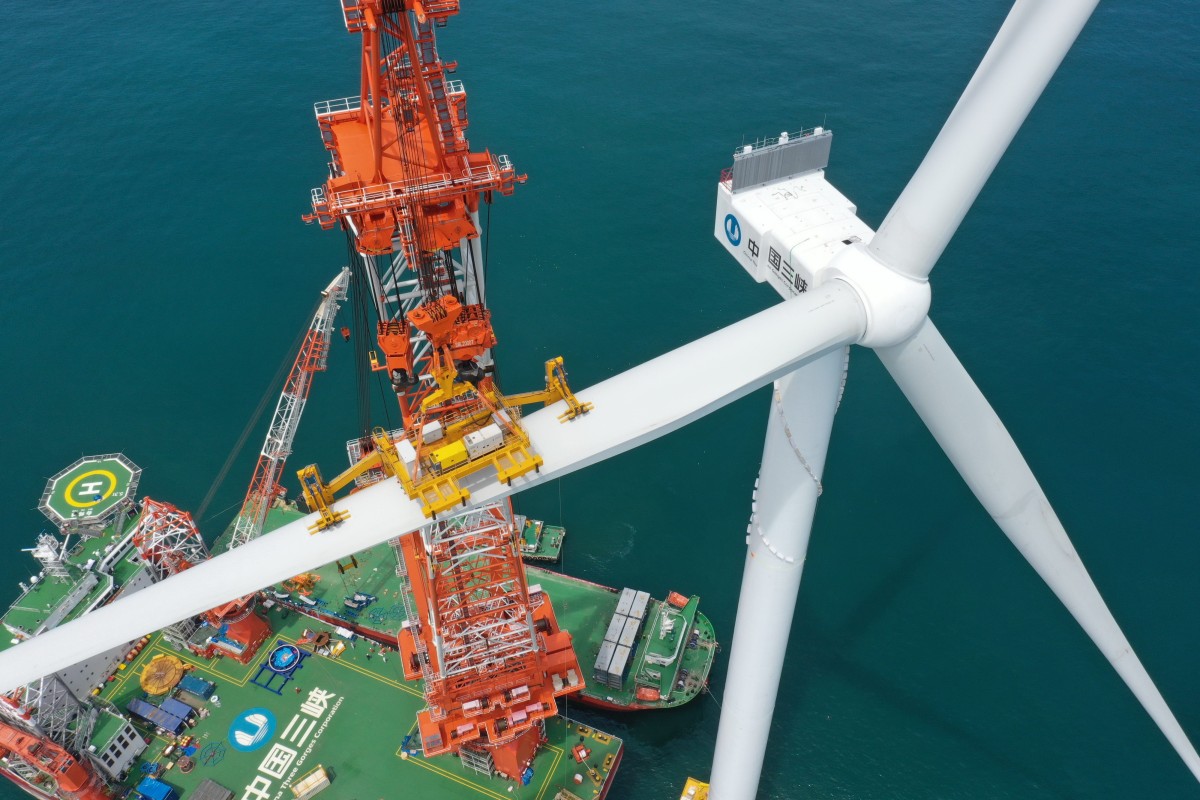Impact Of China's Rare Earth Export Controls On Tesla's Optimus Robot Project

Table of Contents
China's Dominance in Rare Earth Mining and Processing
The Extent of China's Control
China's control over the rare earth market is undeniable. It possesses a vastly disproportionate share of global rare earth production and processing capacity, a situation with significant implications for global supply chains. This dominance isn't merely a matter of quantity; it also encompasses advanced processing capabilities, making China a critical link in the supply chain for many high-tech industries.
- Market Share: China accounts for over 60% of global rare earth production, a figure that fluctuates slightly year to year but remains consistently high.
- Key Elements for Optimus: Neodymium and dysprosium, crucial for powerful and efficient permanent magnets used in Optimus's motors and actuators, are among the rare earths where China holds significant sway. Other elements like terbium and europium, vital for certain lighting and sensor technologies, also contribute to China's leverage.
- Geographical Concentration: The geographical concentration of rare earth mines further exacerbates the issue, with the majority located in China's Inner Mongolia and southern regions. This concentration creates significant vulnerabilities in the global supply chain.
The implications of this dominance are clear: a potential for significant supply chain disruptions, price volatility, and geopolitical leverage. Any restrictions or interruptions in the flow of rare earths from China could have a cascading effect on numerous industries, particularly those involved in advanced manufacturing and robotics.
Rare Earth Elements in Optimus Robot Production
Essential Components Requiring Rare Earths
The Optimus robot, with its advanced capabilities, relies heavily on rare earth elements for several key components. Disruptions in the rare earth supply chain could severely impact its production and functionality.
- Motors and Actuators: High-performance permanent magnet motors, essential for Optimus's movement and dexterity, rely heavily on neodymium and dysprosium magnets for their power and efficiency. These motors are crucial for the robot's articulation and precise movements.
- Sensors and Electronics: Various sensors used in Optimus, such as those for object recognition, navigation, and environmental monitoring, also utilize rare earth elements in their manufacturing. These include specialized ceramics and components within the sensors themselves.
- Battery Technology: While not directly incorporated into the battery chemistry, rare earth elements are used in the manufacturing of components within the battery pack of the robot, influencing efficiency and performance.
If Tesla faces unreliable sourcing of these crucial rare earths, it could encounter significant technical challenges, potentially impacting the robot's performance, durability, and cost-effectiveness. This could lead to delays in production and a compromised final product.
Potential Impacts of Export Controls on Tesla's Optimus Timeline and Costs
Supply Chain Disruptions and Delays
China's potential imposition of export controls on rare earth elements would have a profoundly negative impact on Tesla's Optimus project.
- Increased Lead Times: Sourcing rare earth components would become significantly more difficult and time-consuming, leading to extended lead times for crucial parts.
- Higher Production Costs: The scarcity and increased competition for rare earths would inevitably drive up prices, substantially increasing Optimus's production costs.
- Impact on Production Targets: These delays and increased costs could severely impact Tesla's ability to meet its ambitious production targets for the Optimus robot, potentially delaying its market launch and reducing its competitiveness.
These disruptions could negatively affect Tesla's profitability and competitiveness in the burgeoning robotics market, potentially giving an advantage to competitors with more diversified supply chains.
Tesla's Strategies to Mitigate Rare Earth Dependency
Diversification of Suppliers
Tesla is likely exploring several strategies to mitigate its reliance on Chinese rare earths.
- Investment in Mining and Processing: Tesla may invest in or partner with mining and processing operations outside China to secure a more stable and diversified supply of rare earths. This could involve direct investment in mines or forging strategic partnerships with companies in Australia, the US, or other regions.
- Partnerships with Alternative Suppliers: Securing agreements with alternative suppliers in countries like Australia, Canada, or even Vietnam, which are exploring their own rare earth resources, could lessen Tesla's dependence on China.
- Research and Development of Rare-Earth-Free Alternatives: Tesla may also invest heavily in research and development to explore and implement alternative materials and technologies that minimize or eliminate the need for rare earth elements in its robots. This is a long-term strategy but could offer a significant competitive advantage.
The success of these strategies hinges on the feasibility of scaling up production outside China and the speed of technological innovation in finding rare-earth-free alternatives.
Geopolitical Implications and Future Outlook
The Broader Context of US-China Relations
Tesla's predicament highlights the complex interplay between technology, economics, and geopolitics.
- Increased Competition and Tension: The rare earth issue exacerbates the existing competition and tension between the US and China, highlighting the strategic importance of these materials.
- Potential for Trade Disputes and Sanctions: The potential for trade disputes and sanctions related to rare earth exports further complicates the situation, adding uncertainty to the global supply chain.
- Incentives for Other Countries: The current situation provides significant incentives for other countries to invest in developing their own domestic rare earth industries, potentially leading to a more diversified global market in the long term.
The long-term implications for the global rare earth market are significant, potentially reshaping the technological landscape and influencing the balance of power in international relations.
Conclusion: Navigating the Challenges of Rare Earth Supply for Tesla's Optimus Robot
Tesla's Optimus robot project faces considerable challenges due to China's dominance in the rare earth market. The potential for export controls poses risks to Tesla's production timeline, costs, and overall competitiveness. To mitigate these risks, Tesla must diversify its supply chains, invest in alternative technologies, and navigate the complex geopolitical landscape. Understanding the complexities of rare earth supply chain challenges, Tesla's Optimus robot and rare earths, and the geopolitics of rare earth elements and robotics is crucial for anyone following the future of automation and technological advancement. Continue to explore these topics to stay informed about this critical issue and its impact on the future of technology.

Featured Posts
-
 Canadian Auto Dealers Propose Five Point Plan Amidst Us Trade War
Apr 24, 2025
Canadian Auto Dealers Propose Five Point Plan Amidst Us Trade War
Apr 24, 2025 -
 Canadas Fiscal Future A Vision For Responsible Spending
Apr 24, 2025
Canadas Fiscal Future A Vision For Responsible Spending
Apr 24, 2025 -
 Instagrams Response To Tik Tok A Dedicated Video Editing App
Apr 24, 2025
Instagrams Response To Tik Tok A Dedicated Video Editing App
Apr 24, 2025 -
 John Travoltas Daughter Ella Bleu 24 Shows Off Dazzling New Look
Apr 24, 2025
John Travoltas Daughter Ella Bleu 24 Shows Off Dazzling New Look
Apr 24, 2025 -
 I Sygkinitiki Mnimi Toy Tzon Travolta Gia Ton Tzin Xakman
Apr 24, 2025
I Sygkinitiki Mnimi Toy Tzon Travolta Gia Ton Tzin Xakman
Apr 24, 2025
